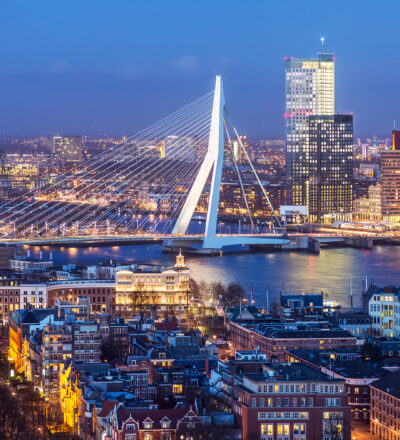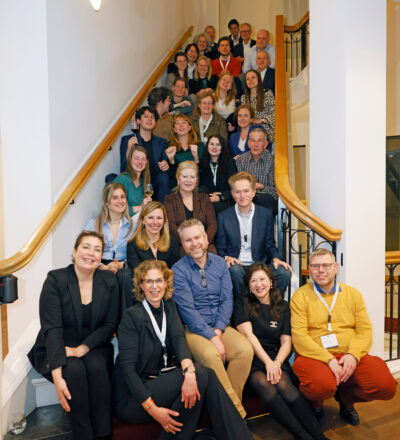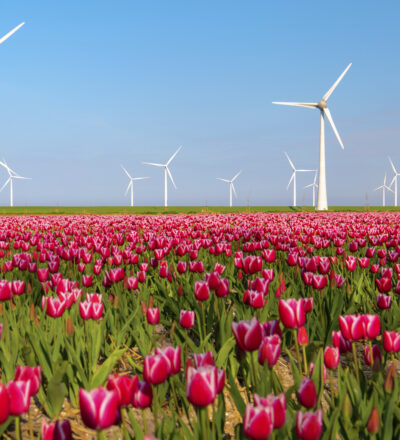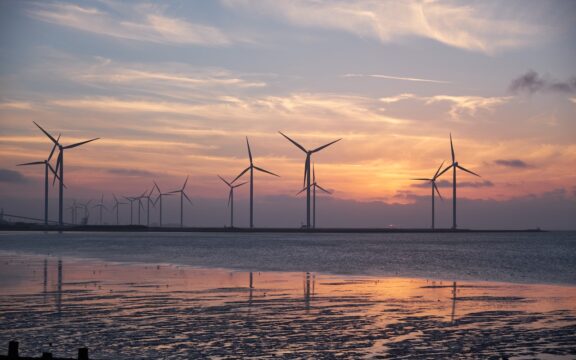The energy transition signifies a profound shift from reliance on fossil fuels – derived from oil, natural gas, and coal—to harnessing renewable energy sources like sunlight, wind, geothermal heat, biomass, and hydropower. The industrial sector in the Netherlands plays a crucial role in this energy transition. Representing a substantial portion of national energy consumption, the sector faces the dual challenge and opportunity of transforming its operations to be more sustainable and efficient.
The Netherlands is striving for a waste-free, fully circular economy by 2050, built upon reusable raw materials, including those from agriculture and forestry (like cotton, wood, and paper), while curbing the use of non-renewable resources like minerals and man-made materials (e.g., concrete and plastics).
These renewables offer a crucial advantage: they can be perpetually replenished. Furthermore, renewable energy drastically lower greenhouse gas emissions compared to fossil energy consumption.
Global warming: a looming crisis
The production, distribution, and processing of fossil fuels, such as natural gas and oil, release greenhouse gases like CO2 and methane, significantly contributing to global warming. The consequences are stark—over the past century, the earth’s average temperature has surged by approximately 1.1 degrees Celsius, according to the United Nations Climate Panel IPCC.
This warming has sparked a cascade of events, including extreme weather incidents, the melting of ice caps, and the encroachment of desertification.
International agreements: the path to a cooler planet
In December 2015, binding agreements were made between governments at the United Nations Climate Change Summit in Paris. The primary goal is to keep global warming under the 2-degree Celsius mark by 2100, with an even more ambitious target of limiting it to 1.5 degrees Celsius. The Netherlands, too, is firmly committed to both international pacts, like the EU Green Deal, and domestic agreements and regulations aimed at fostering and monitoring the progress of the energy transition.
The Netherlands’ Climate Act, passed into law, stipulates:
- A reduction of 49% in greenhouse gas emissions by 2030
- An impressive 95-100% decrease by 2050
This legal commitment compels every government administration to stay on course. The Climate Agreement further outlines specific strategies and measures spanning various sectors, including the built environment, mobility, electricity, agriculture, and industry.
A climate-neutral and circular manufacturing industry in 2050
The industrial sector in the Netherlands plays a crucial role in this energy transition. Representing a substantial portion of national energy consumption, the sector faces the dual challenge and opportunity of transforming its operations to be more sustainable and efficient.
The manufacturing sector aspires to achieve climate neutrality by 2050, driven by increased material and product reuse. Energy conservation, efficiency enhancements, and the adoption of sustainable energy sources, such as hydrogen generated from offshore wind power, are pivotal.
Challenge, or opportunity?
The Netherlands is priviliged because of our waterfront location. It will enable the Dutch industry to be a central player in the European landscape, unlocking great chances for our industry.
Because thanks to our coastal location, the Netherlands has access to large amounts of sustainable and cheap energy.
- By 2030, we will produce 21 gigawatts of wind energy at sea (this is 75% of our current electricity use)
- By 2040, there should be 50 gigawatts of wind power at sea
- By 2050, about 70 gigawatts

When we combine our own green energy with offshore wind energy and hydrogen (coming to Dutch seaports from other regions of the world) it will enable the Dutch industry to be a central player in the European landscape.
Key succes factors for the energy transition
Together with our stakeholders, the Institute for Sustainable Process Technology (ISPT) is involved in establishing the infrastructure that is needed for the energy transition. Constructing the energy system of the future requires grid flexibility and a well-balanced energy mix of solar, wind, biomass, and green hydrogen.
ISPT has extensive expertise in the key succes factors for the energy transition:
- Electrification
- Green hydrogen
- Clean ammonia in a hydrogen economy
- Energy efficiency during drying and dewatering in the process industry
- Industry 4.0: digitalization, artificial intelligence (AI) and computing and the impact on energy efficiency
1. Electrification
Electrification (replacing fossil fuels with renewable electrical energy) is a sustainable choice, and also strategically and financially smart. Here’s why: by electrifiing your processes, you will improve efficiency by a factor of at least 2. That’s Carnot’s theory. Until recently, electricity used to cost twice as much as gas. So the one fact cancels the other out. But on the cost side, things are changing rapidly: gas is getting more expensive, while renewable electricity is getting cheaper.
The price of gas is rising, while that of electricity is tied to capex and will decline in the near future. After all, we’re seeing a growing supply from renewable sources such as solar and wind. Add to that the cost of CO2 emissions, and you can see that industrial electrification leads directly to a strong business case.
Direct and indirect electrification
Yet, electrification is easier said than done. Some industrial processes can use direct electrification, but for others this will be quite difficult. With direct electrification we can directly replace fossil fuels with green electricity. In some, more complex industrial cases, such as extracting iron in a blast furnace, this will not be possible. Because coal produces a carbon that likes to bind to oxygen, thereby serving as the perfect fuel for iron production. Electricity does not have this property, making direct electrification of iron production difficult.
In this case, we turn to indirect electrification. Think for example of green hydrogen, a clean energy carrier is produced using green electricity. With green hydrogen heat can be produced in a boiler and energy can be stored with it to bridge periods of low power supply.
Also interesting to read: The how, what, where and why of electrification in industry
2. Green hydrogen as a sustainable solution
Green hydrogen is a crucial element in the large scale sustainable energy system of the future. Huge amounts of hydrogen are needed to buffer the fluctuations in electricity production and create a robust energy system. It’s also crucial for industries and transport sectors that cannot be powered electrically.
Hydrogen can be used as energy storage, energy carrier, and feedstock. As an energy carrier, it enables the storage of renewable electricity produced by wind farms and solar plants. It also offers a sustainable alternative for grey hydrogen used by the chemical industry as a feedstock for the production of chemicals.
Green hydrogen is one of the key puzzle pieces of the energy transition. ISPT works on projects that develop new hydrogen production technologies, scale up existing technologies, and develop the supply chain.
Also interesting to read: De Nederlandse sprong naar leiderschap in de waterstofeconomie: 4 sleutelfactoren voor succes
3. Clean ammonia in a hydrogen economy
Within the energy transition, ammonia has recently emerged as a promising molecule. Although readily used as a commodity, there might be a new role for ammonia as a marine fuel or as a key energy vector in the hydrogen economy.
What makes clean ammonia attractive is the fact that the infrastructure for exporting and importing ammonia already exists. Ammonia can therefore easily be imported from areas with an abundance of renewable energy sources to the Netherlands, where sustainable energy is less available. The facilities of ships, tanks and pipelines for the transportation of ammonia have been in use for many years. This means that the supply chain and logistics infrastructure are already mature and well developed. This allows for possibilities to implement ammonia at large-scale. And given that the Dutch energy goals are approaching quickly, it’s the speed we need.
Ammonia can locally be converted into hydrogen and transported to end users. ISPT’s projects on clean ammonia explored potential market volumes, value chains, and enablers for clean ammonia as an energy and hydrogen carrier.
Also interesting to read: Ammonia as a new key actor in energy- and material transition – a threefold story
4. Energy efficiency during drying and dewatering in the process industry
The industry has a great need for sustainable heat. Heat is needed for elevated process temperatures, for drying, and for industrial hot water use. In fact, a large number of companies in the agro-food, paper, chemical, horticultural and food sectors use energy above all for their heat supply.
In the energy transition it is therefore essential for industries to develop sustainable heat supply systems. In view of the complexity of integrating heat innovations in practice, as well as the exponentially growing but scattered amount of knowledge in this field, ISPT has taken the initiative for a national Heat Platform.
5. Industry 4.0 and the impact on energy efficiency
Industrial plants can benefit from digitilization and current technological advances in artificial intelligence, connectivity, computing and sensors. For instance, their equipment can be augmented with sensors that are wirelessly connected to a central system that oversees the entire production. Such a system can not only monitor production but also control it, making decisions on its own.
Process optimization using sensors, connectivity and intelligent control enables more efficient use of energy and resources. Digitilization can result in predictive quality, predictive cost, predictive supply and predictive maintenance. It can also enable information sharing across the supply and value chain and across production plants.
With digitilization we can quickly reduce our energy use by at least 20% to 30%.
ISPT and the energy transition
The Institute for Sustainable Process Technology (ISPT) operates independently and on a non-profit base. Through extensive collaborations with companies and academic institutions, we acquire knowledge, data, and insights vital in realizing the ultimate objective: a circular and climate-neutral process industry by 2050.
ISPT serves as a platform and network organization, and has a significant impact in the realm of the energy transition, as well as material transition and sustainable agriculture.
We feel at home in complex projects involving multiple actors and stakeholders.





